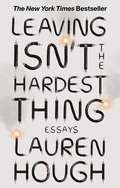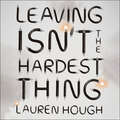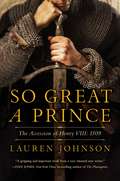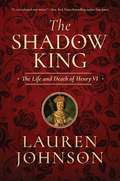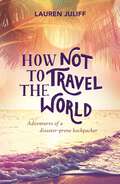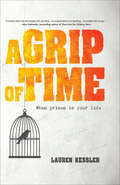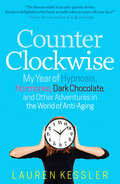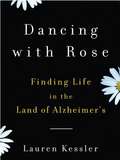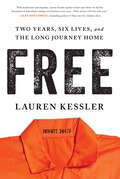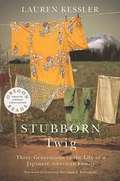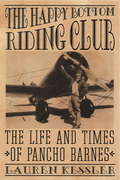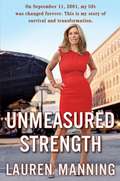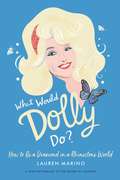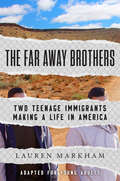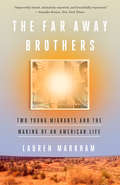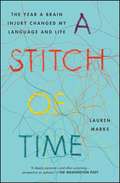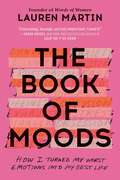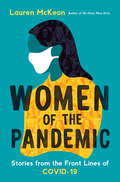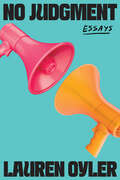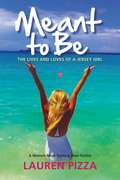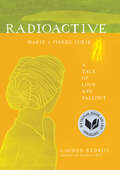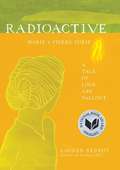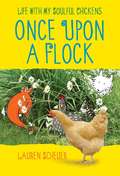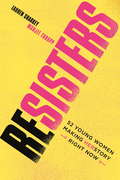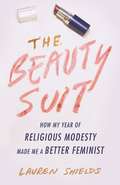- Table View
- List View
Leaving Isn't the Hardest Thing: The New York Times bestseller
by Lauren Hough'Hough's conversational prose reads like the voice of a blues singer, taking breaks between songs to narrate her heartbreak in verse, cajoling her audience to laugh to keep from crying' - The New York Times'Hough's writing will break your heart' - Roxane Gay, author of Difficult Women'Each one told with the wit of David Sedaris, and the insight of Joan Didion' - Telegraph 'This moving account of resilience and hard-earned agency brims with a fresh originality' - Publishers WeeklySearing and extremely personal essays from the heart of working-class America, shot through with the darkest elements the country can manifest - cults, homelessness, and hunger - while discovering light and humor in unexpected corners.As an adult, Lauren Hough has had many identities: an airman in the U.S. Air Force, a cable guy, a bouncer at a gay club. As a child, however, she had none. Growing up as a member of the infamous cult The Children of God, Hough had her own self robbed from her. The cult took her all over the globe but it wasn't until she finally left for good that Lauren understood she could have a life beyond "The Family."Along the way, she's loaded up her car and started over, trading one life for the next. Here, as she sweeps through the underbelly of America--relying on friends, family, and strangers alike--she begins to excavate a new identity even as her past continues to trail her and color her world, relationships, and perceptions of self.At once razor-sharp, profoundly brave, and often very, very funny, the essays in Leaving Isn't the Hardest Thing interrogate our notions of ecstasy, queerness, and what it means to live freely. Each piece is a reckoning: of survival, identity, and how to reclaim one's past when carving out a future.
Leaving Isn't the Hardest Thing: The New York Times bestseller
by Lauren HoughSearing and extremely personal essays from the heart of working-class America, shot through with the darkest elements the country can manifest - cults, homelessness, and hunger - while discovering light and humor in unexpected corners.'Hough's writing will break your heart' - Roxane Gay, author of Difficult Women'An edgy and unapologetic memoir in essays' - Kirkus Reviews'This moving account of resilience and hard-earned agency brims with a fresh originality' - Publishers WeeklySearing and extremely personal essays from the heart of working-class America, shot through with the darkest elements the country can manifest - cults, homelessness, and hunger - while discovering light and humor in unexpected corners.As an adult, Lauren Hough has had many identities: an airman in the U.S. Air Force, a cable guy, a bouncer at a gay club. As a child, however, she had none. Growing up as a member of the infamous cult The Children of God, Hough had her own self robbed from her. The cult took her all over the globe--to Germany, Japan, Texas, Chile--but it wasn't until she finally left for good that Lauren understood she could have a life beyond "The Family."Along the way, she's loaded up her car and started over, trading one life for the next. She's taken pilgrimages to the sights of her youth, been kept in solitary confinement, dated a lot of women, dabbled in drugs, and eventually found herself as what she always wanted to be: a writer. Here, as she sweeps through the underbelly of America--relying on friends, family, and strangers alike--she begins to excavate a new identity even as her past continues to trail her and color her world, relationships, and perceptions of self.At once razor-sharp, profoundly brave, and often very, very funny, the essays in Leaving Isn't the Hardest Thing interrogate our notions of ecstasy, queerness, and what it means to live freely. Each piece is a reckoning: of survival, identity, and how to reclaim one's past when carving out a future.(P) 2021 Hodder & Stoughton Ltd
So Great a Prince: England In 1509 (Great Lives Ser.)
by Lauren JohnsonA vivid and original portrait of the year the young Henry VIII assumes the throne, revealing a kingdom at a crossroads between two dynamic monarchs and two ages of history. England, 1509. Henry VII, the first Tudor monarch, is dead; his successor, the seventeen-year-old Henry VIII, offers hope of renewal and reconciliation after the corruption and repression of the last years of his father's reign. The kingdom Henry inherits is not the familiar Tudor England of Protestantism and playwrights. It is still more than two decades away from the English Reformation, and ancient traditions persist: boy bishops, pilgrimages, Corpus Christi pageants, the jewel-decked shrine at Canterbury. So Great a Prince offers a fascinating portrait of a country at a crossroads between two powerful monarchs and between the worlds of the late Middle Ages and the Renaissance. Historian Lauren Johnson tells the story of 1509 not just from the perspective of the young king and his court, but from the point of view of merchants, ploughmen, apprentices, laundresses, and foreign workers. She looks at these early Tudor lives through the rhythms of annual rituals, juxtaposing political events in Westminster and the palaces of southeast England with the religious, agrarian, and social events that punctuated the lives of the people of young Henry VIII's England.
The Shadow King: The Life And Death Of Henry Vi
by Lauren JohnsonA thrilling new account of the tragic story and troubled times of Henry VI, who inherited the crowns of both England and France and lost both. Firstborn son of a warrior father who defeated the French at Agin- court, Henry VI of the House of Lancaster inherited the crown not only of England but also of France, at a time when Plantagenet dominance over the Valois dynasty was at its glorious height. And yet, by the time he died in the Tower of London in 1471, France was lost, his throne had been seized by his rival, Edward IV of the House of York, and his kingdom had descended into the violent chaos of the Wars of the Roses. Henry VI is perhaps the most troubled of English monarchs, a pious, gentle, well-intentioned man who was plagued by bouts of mental illness. In The Shadow King, Lauren Johnson tells his remark- able and sometimes shocking story in a fast-paced and colorful narrative that captures both the poignancy of Henry’s life and the tumultuous and bloody nature of the times in which he lived.
How Not to Travel the World: Adventures of a Disaster-Prone Backpacker
by Lauren JuliffWhen Lauren left to go travelling, she thought she would instantly become a glamorous backpacker. But after being mugged, scammed, caught up in a tsunami and experiencing a very unhappy ending during a massage, she realised that learning how NOT to travel the world was the most enlightening experience she could have hoped for.
A Grip of Time: When Prison Is Your Life
by Lauren Kessler“The book provides insight into life inside a maximum-security prison while illuminating the benefits of the craft of writing. . . . compassionate.” —Publishers WeeklyA Grip of Time (prison slang for a very long sentence behind bars) takes readers into a world most know little about—a maximum-security prison—and into the minds and hearts of the men who live there. These men, who are serving out life sentences for aggravated murder, join a fledgling Lifers’ Writing Group started by award-winning author Lauren Kessler. Over the course of three years, meeting twice a month, the men reveal more and more about themselves, their pasts, and the alternating drama and tedium of their incarcerated lives. As they struggle with the weight of their guilt and wonder if they should hope for a future outside prison walls, Kessler struggles with the fiercely competing ideas of rehabilitation and punishment, forgiveness and blame that are at the heart of the American penal system. Gripping, intense, and heartfelt, A Grip of Time: When Prison Is Your Life shows what a lifetime with no hope of release looks like up-close.“Takes us on a compelling, intensely personal journey into the rarely glimpsed end point of our justice system . . . What dignity, meaning, and success these lifers achieve despite the system’s design.” —Edward Humes, Pulitzer Prize–winning author of Burned: A Story of Murder and the Crime That Wasn’t“A keenly observed and deeply felt narrative . . . so original and so compelling . . . it wouldn’t let me go.” —Alex Kotlowitz, national bestselling author of An American Summer
Counterclockwise: My Year of Hypnosis, Hormones, Dark Chocolate, and Other Adventures in the World of Anti-aging
by Lauren KesslerAt this moment, one in three Americans is entering midlife, and many are wondering, "How did I get to be this old?" Plenty will turn to miracle creams, injections, fillers, and surgery to reverse the hands of time, but Kessler investigates the largely unexplored side of anti-aging: what it takes to be younger, not just look younger. Guided by an open but pleasantly skeptical mind, a thirst for adventure, and a sense of humor, she investigates America's youth obsession and decides, on a very personal level, what to do about it. She is at once the careful reporter, the immersion journalist, the self-designated lab rat, and a midlife woman who is not interested in being as old as her driver's license insists she is.Counterclockwise is a lively quest to discover how to maintain stamina, vitality, fortitude, and creativity right to the very end."The human smile is an anti-gravity device. Kessler's delightful, witty book actually takes 20 yearsoff your face!"—Mary Roach, author of Stiff and Gulp
Dancing with Rose: Finding Life in the Land of Alzheimer
by Lauren KesslerOne journalist's riveting... and surprisingly hopeful... in-the-trenches view of Alzheimer's Nearly five million people in the United States are living with Alzheimer's. Like many children of Alzheimer's sufferers, Lauren Kessler, an accomplished journalist, was devastated by the disease that seemed to erase her mother's identity even before claiming her life. But suppose people with Alzheimer's are not slates wiped blank. Suppose they experience friendship and loss, romance and jealousy, joy and sorrow? To better understand this debilitating condition, Kessler enlists as a bottom-of-the-rung caregiver at an Alzheimer's facility and learns lessons that challenge what we think we know about the disease. A compelling, clear-eyed, and emotionally resonant narrative, Finding Life in the Land of Alzheimer's offers a new optimistic look at what the disease can teach us and a much-needed tonic for those faced with providing care for someone they love.
Free: Two Years, Six Lives, and the Long Journey Home
by Lauren Kessler95 percent of the millions of American men and women who go to prison eventually get out. What happens to them?There's Arnoldo, who came of age inside a maximum security penitentiary, now free after nineteen years. Trevor and Catherine, who spent half of their young lives behind bars for terrible crimes committed when they were kids. Dave, inside the walls for 34 years, now about to reenter an unrecognizable world. Vicki, a five-time loser who had cycled in and out of prison for more than a third of her life. They are simultaneously joyful and overwhelmed at the prospect of freedom. Anxious, confused, sometimes terrified, and often ill-prepared to face the challenges of the free world, all are intent on reclaiming and remaking their lives.What is the road they must travel from caged to free? How do they navigate their way home?A gripping and empathetic work of immersion reportage, FREE reveals what awaits them and the hundreds of thousands of others who are released from prison every year: the first rush of freedom followed quickly by institutionalized obstacles and logistical roadblocks, grinding bureaucracies, lack of resources, societal stigmas and damning self-perceptions, the sometimes overwhelming psychological challenges. Veteran reporter Lauren Kessler, both clear-eyed and compassionate, follows six people whose diverse stories paint an intimate portrait of struggle, persistence, and resilience.The truth—the many truths—about life after lockup is more interesting, more nuanced, and both more troubling and more deeply triumphant than we know.
Stubborn Twig: Three Generations in the Life of a Japanese American Family
by Lauren KesslerStubborn Twig was selected by the Oregon Library Association as one of three books for "Oregon Reads", in early 2009. These books were chosen for the 150th state anniversary. The middle school book ("Bat 6", in the Bookshare collection), and this one (high school to adult) focus on the history of the Japanese Americans in Oregon. Stubborn Twig follows a well-known family through its life in Hood River valley and beyond. The WWII period includes the forced internment of all Japanese people on the west coast to inland relocation camps for the duration of the war. Stubborn Twig includes photos (captions are included with text), discussion group questions, and an index.
The Happy Bottom Riding Club
by Lauren KesslerPancho Barnes was a force of nature, a woman who lived a big, messy, colorful, unconventional life. She ran through three fortunes, four husbands, and countless lovers. She outflew Amelia Earhart, outsmarted Howard Hughes, outdrank the Mexican Army, and out- maneuvered the U.S. government. In The Happy Bottom Riding Club, award-winning author Lauren Kessler tells the story of a high-spirited, headstrong woman who was proud of her successes, unabashed by her failures, and the architect of her own legend. Florence "Pancho" Barnes was a California heiress who inherited a love of flying from her grandfather, a pioneer balloonist in the Civil War. Faced with a future of domesticity and upper-crust pretensions, she ran away from her responsibilities as wife and mother to create her own life. She cruised South America. She trekked through Mexico astride a burro. She hitchhiked halfway across the United States. Then, in the late 1920s, she took to the skies, one of a handful of female pilots. She was a barnstormer, a racer, a cross-country flier, and a Hollywood stunt pilot. She was, for a time, "the fastest woman on earth," flying the fastest civilian airplane in the world. She was an intimate of movie stars, a script doctor for the great director Erich von Stroheim, and, later in life, a drinking buddy of the supersonic jet jockey Chuck Yeager. She ran a wild and wildly successful desert watering hole known as the Happy Bottom Riding Club, the raucous bar and grill depicted in The Right Stuff. In The Happy Bottom Riding Club, Lauren Kessler presents a portrait, both authoritative and affectionate, of a woman who didn't play by women's rules, a woman of large appetites--emotional, financial, and sexual--who called herself "the greatest conversation piece that ever existed."From the Hardcover edition.
Unmeasured Strength
by Lauren ManningA survivor's awe-inspiring story of how she overcame tragedy and re-created herself as a wife, mother, and woman. She was a hardworking business woman, had a loving husband and an infant son, and a confidence born of intelligence and beauty. <P><P>But on 9/11, good fortune was no match for catastrophe. When a wall of flame at the World Trade Center burned more than 80 percent of her body, Lauren Manning began a ten-year journey of survival and rebirth that tested her almost beyond human endurance. Long before that infamous September day, Manning learned the importance of perseverance, relentless hard work, and a deep faith in oneself. <P><P> So when the horrific moment of her near-death arrived, she possessed the strength and resilience to insist that she would not yield--not to the terrorists, not to the long odds, not to the bottomless pain and exhaustion. But as the difficult months and years went by, she came to understand that she had to do more than survive. <P><P>She needed to undergo a complete transformation, one that would allow her to embrace her life and her loved ones in an entirely new way. Fleeing the burning tower, Manning promised herself that she would see her son's face again. <P><P>Courageous and inspiring, Unmeasured Strength tells the riveting story of her heroic effort to make that miracle--and so many others--possible.
What Would Dolly Do?: How to Be a Diamond in a Rhinestone World
by Lauren MarinoA spirited homage to Dolly Parton that captures the unique humor, no-nonsense wisdom, flash, and sass of one of America's most iconic stars.One of twelve children raised in a shack in the foothills of the Appalachian Mountains, Dolly Parton grew to become an international superstar famous for classic songs such as "Jolene," "9 to 5," "The Coat of Many Colors," and "I Will Always Love You." She is a reflection of the American dream, a role model for the ages, and a mentor to a whole new generation of entertainers. There is much to be learned from her unique brand, her big heart and spirituality, her grit and work ethic.This lively, illustrated book--part biography, part inspiration, part words of wisdom and life lessons--highlights the very best of the "Dolly Mama," from her quotable Dollyisms, unrelenting positivity, and powerful spirituality, to her belief in the human ability to overcome adversity. Drawing on Dolly's two autobiographies, cookbooks and songs; as well as artifacts; books by her family members; biographies; and decades worth of television, print interviews and performances, What Would Dolly Do? shows you how to tap into your Inner Dolly with confidence, faith, and humor.
The Far Away Brothers: Two Teenage Immigrants Making a Life in America
by Lauren MarkhamThe inspiring true story about identical twin teenage brothers who escape El Salvador's violence to build new lives in California as undocumented immigrants, perfect for fans of Enrique's Journey and anyone interested in learning about the issues that underlie today's conversations about DACA and immigration reform. <P><P>Ernesto and Raúl Flores are identical twins, used to being mistaken for each other. As seventeen-year-olds living in rural El Salvador, they think the United States is just a far-off dream--it's too risky, too expensive to start a life there. But when Ernesto ends up on the wrong side of MS-13, one of El Salvador's brutal gangs, he flees the country for his own safety. Raúl, fearing that he will be mistaken for his brother, follows close behind. Running from one danger to the next, the Flores twins make the harrowing journey north, crossing the Rio Grande and the Texas desert only to fall into the hands of immigration authorities. When they finally make it to the custody of their older brother in Oakland, California, the difficulties don't end. While navigating a new school in a new language, struggling to pay off their mounting coyote debt, and anxiously waiting for their day in immigration court, Raul and Ernesto are also trying to lead normal teenage lives--dealing with girls, social media, and fitting in. With only each other for support, they begin the process of carving out a life for themselves, one full of hope and possibility. <P><P>Adapted for young adults from the award-winning adult edition, The Far Away Brothers is the inspiring true story of two teens making their way in America, a personal look at U.S. immigration policy, and a powerful account of contemporary immigration.
The Far Away Brothers: Two Young Migrants and the Making of an American Life
by Lauren MarkhamThe deeply reported story of identical twin brothers who escape El Salvador's violence to build new lives in California—fighting to survive, to stay, and to belong.Growing up in rural El Salvador in the wake of the civil war, Ernesto Flores had always had a fascination with the United States, the distant land of skyscrapers and Nikes, while his identical twin, Raul, never felt that northbound tug. But when Ernesto ends up on the wrong side of the region's brutal gangs he is forced to flee the country, and Raul, because he looks just like his brother, follows close behind—away from one danger and toward the great American unknown.In this urgent chronicle of contemporary immigration, journalist Lauren Markham follows the seventeen-year-old Flores twins as they make their harrowing journey across the Rio Grande and the Texas desert, into the hands of immigration authorities, and from there to their estranged older brother's custody in Oakland, CA. Soon these unaccompanied minors are navigating a new school in a new language, working to pay down their mounting coyote debt, and facing their day in immigration court, while also encountering the triumphs and pitfalls of life as American teenagers—girls, grades, Facebook—with only each other for support. With intimate access and breathtaking range, Markham offers a coming of age tale that is also a nuanced portrait of Central America's child exodus, an investigation of U.S. immigration policy, and an unforgettable testament to the migrant experience.
A Stitch of Time: The Year a Brain Injury Changed My Language and Life
by Lauren MarksFor fans of Brain on Fire and My Stroke of Insight, an incredible first-person account of one woman’s journey to regaining her language and identity after a brain aneurysm affects her ability to communicate.Lauren Marks was twenty-seven, touring a show in Scotland with her friends, when an aneurysm ruptured in her brain and left her fighting for her life. She woke up in a hospital soon after with serious deficiencies to her reading, speaking, and writing abilities, and an unfamiliar diagnosis: aphasia. This would be shocking news for anyone, but Lauren was a voracious reader, an actress, director, and dramaturg, and at the time of the event, pursuing her PhD. At any other period of her life, this diagnosis would have been a devastating blow. But she woke up...different. The way she perceived her environment and herself had profoundly changed, her entire identity seemed crafted around a language she could no longer access. She returned to her childhood home to recover, grappling with a muted inner monologue and fractured sense of self. Soon after, Lauren began a journal, to chronicle her year following the rupture. A Stitch of Time is the remarkable result, an Oliver Sacks–like case study of a brain slowly piecing itself back together, featuring clinical research about aphasia and linguistics, interwoven with Lauren’s personal narrative and actual journal entries that marked her progress. Alternating between fascination and frustration, she relearns and re-experiences many of the things we take for granted—reading a book, understanding idioms, even sharing a “first kiss”—and begins to reconcile “The Girl I Used to Be” with “The Girl I Am Now.” Deeply personal and powerful, A Stitch of Time is an unforgettable journey of self-discovery, resilience, and hope.
The Book of Moods: How I Turned My Worst Emotions Into My Best Life
by Lauren MartinThe Happiness Project meets So Sad Today in this "hilariously witty, unflinchingly honest" book from Words of Women founder Lauren Martin, as she contemplates the nature of negative emotions -- and the insights that helped her to take control of her life (Bobbi Brown).Five years ago, Lauren Martin was sure something was wrong with her. She had a good job in New York, an apartment in Brooklyn, a boyfriend, yet every day she wrestled with feelings of inferiority, anxiety and irritability. It wasn't until a chance encounter with a (charming, successful) stranger who revealed that she also felt these things, that Lauren set out to better understand the hold that these moods had on her, how she could change them, and began to blog about the wisdom she uncovered. It quickly exploded into an international online community of women who felt like she did: lost, depressed, moody, and desirous of change.Inspired by her audience to press even deeper, The Book of Moodsshares Lauren's journey to infuse her life with a sense of peace and stability. With observations that will resonate and inspire, she dives into the universal triggers every woman faces -- whether it's a comment from your mother, the relentless grind at your job, days when you wish the mirror had a Valencia filter, or all of the above. Blending cutting-edge science, timeless philosophy, witty anecdotes and effective forms of self-care, Martin has written a powerful, intimate, and incredibly relatable chronicle of transformation, proving that you really can turn your worst moods into your best life.
Women of the Pandemic: Stories from the Frontlines of COVID-19
by Lauren McKeonThe story of the pandemic is the story of women. This riveting narrative offers an account of COVID-19, reminding us of women's leadership and resilience, reflecting back hope and humanity as we all figure out a new normal, together.Throughout history, men have fought, lost, and led us through the world's defining crises. That all changed with COVID-19. In Canada, women's presence in the response to the pandemic has been notable. Women are our nurses, doctors, PSWs. Our cashiers, long-haulers, cooks. In Canada, women are leading the fast-paced search for a vaccine. They are leading our provinces and territories. At home, they are leading families through self-isolation, often bearing the responsibility for their physical and emotional health. They are figuring out what working from home looks like, and many of them are doing it while homeschooling their kids. Women crafted the blueprint for kindness during the pandemic, from sewing masks to kicking off international mutual-aid networks. And, perhaps not surprisingly, women have also suffered some of the biggest losses, bearing the brunt of our economic skydive. Through intimate portraits of Canadian women in diverse situations and fields, Women of the Pandemic is a gripping narrative record of the early months of COVID-19, a clear-eyed look at women's struggles, which highlights their creativity, perseverance, and resilience as they charted a new path forward during impossible times.
No Judgment: Essays
by Lauren Oyler"The essay collection everyone’s talking about."—New YorkA MOST ANTICIPATED BOOK OF 2024: Elle, The Millions, LitHub, Nylon, BookPage, PureWow, and moreFrom the national bestselling novelist and essayist, a groundbreaking collection of brand-new pieces about the role of cultural criticism in our ever-changing world.In her writing for Harper’s, the London Review of Books, The New Yorker, and elsewhere, Lauren Oyler has emerged as one of the most trenchant and influential critics of her generation, a talent whose judgments on works of literature—whether celebratory or scarily harsh—have become notorious. But what is the significance of being a critic and consumer of media in today’s fraught environment? How do we understand ourselves, and each other, as space between the individual and the world seems to get smaller and smaller, and our opinions on books and movies seem to represent something essential about our souls? And to put it bluntly, why should you care what she—or anyone—thinks?In this, her first collection of essays, Oyler writes with about topics like the role of gossip in our exponentially communicative society, the rise and proliferation of autofiction, why we’re all so “vulnerable” these days, and her own anxiety. In her singular prose—sharp yet addictive, expansive yet personal—she encapsulates the world we live and think in with precision and care, delivering a work of cultural criticism as only she can.Bringing to mind the works of such iconic writers as Susan Sontag, Pauline Kael, and Terry Castle, No Judgment is a testament to Lauren Oyler’s inimitable wit and her quest to understand how we shape the world through culture. It is a sparkling nonfiction debut from one of today’s most inventive thinkers.
Meant to Be: The Lives and Loves of a Jersey Girl
by Lauren PizzaWhen Lauren Pizza was thirteen, she died. Caught under a small sailboat, she struggled to reach the surface, only to find that what she thought was up was actually down . . . and that's all she remembers. Ever since being resuscitated by two strangers, Pizza has felt a presence in her life from the spirit world. Is it crazy? Maybe. Her family sure thinks so. Growing up the youngest, and sometimes forgotten, of five in Little Falls, New Jersey, Pizza continues to live the typical life "down the shore" after her accident. She survives high school (barely), goes to college in Dayton, Ohio (which she might have thought was in Florida when she applied), and is ready to settle down with her "perfect" Kennedy-esque boyfriend in Jersey-until she wakes up.Suddenly free and single, Pizza relies on intuition (and perhaps a few signs) and finds herself a job in the city, a grungy apartment in the West Village, and waits for Prince Charming. When he finally arrives, she doesn't recognize him: he drives a red Ferrari, sure, but he has hair like Howard Stern and wears more gold chains than Mr. T. Meant to Be is the story of a blue-collar Jersey girl swept off her feet by an unconventional millionaire, thrust into an entirely new world, where she makes plenty of mistakes and sometimes feels like "I'm from the Jersey Shore" is stapled to her forehead.With humor, gratitude, and trademark Jersey spunk, Lauren tells it like it is: the highs, the lows, the bad twists, the good advice from unlikely places, and the times she wished she could disappear. Underneath the designer clothes and private jets, she's still the same Jersey Girl who took the D train and lived on Snapple. And she wouldn't have it any other way.
Radioactive: Marie & Pierre Curie: A Tale of Love and Fallout
by Lauren RednissA visual journey into the life of Marie Curie, as told through the dazzling collage style of acclaimed author and artist Lauren Redniss “Lauren Redniss creates an entirely new genre of biography.” —Nylon“Visually dazzling…a startlingly original graphic style.” —SlateThe name Marie Curie is enshrined in every schoolchild’s mind as one of the earliest and most inspirational female pioneers in the history of science. Yet the rich, vivid, and romantic story of Marya Salome Sklodwska—the young Polish national who discovered radioactivity—has been lost to time . . . until now, in the pages of this stunning, wildly creative, and uniquely moving visual biography by one of the most creative artistic talents working today. Lauren Redniss, a celebrated New York Times illustrator and storyteller, has thrown herself deeply and passionately into researching the story of the real Marie Curie; of her passionate and tragic romantic life; and of the century of scientific innovation and controversy that sprang from her discovery of radium and went on to change the course of world history. Drawing on her original archival research in Europe and the United States—and a host of new interviews with Curie family members and scientists who carry on the Curie tradition—Redniss has created a fascinating and deeply moving book. A visually stunning work of illustrative art, Radioactive walks the reader through the story of Curie’s own life, which was marked by both extraordinary scientific discovery and dramatic personal trauma—from her romantic partnership with Pierre, through his tragic decline from radium poisoning and death in a traffic accident, to the scandalous affair with another fellow scientist that almost cost her her second Nobel Prize. But it also casts an eye forward, to survey the changes wrought by Curie’s discovery of radioactivity—illuminating the path from the Curie laboratory past the bright red mushroom clouds in the Nevada desert through Three Mile Island and the advance in radiation therapy and nuclear power today. Whether young or old, scientific novice or expert, no one will fail to be moved by Lauren Redniss’s eerie and wondrous evocation of one of history’s most intriguing figures.
Radioactive: Marie And Pierre Curie - A Tale Of Love And Fallout
by Lauren RednissIn 1891, 24-year-old Marie Sklodowska moved from Warsaw to Paris, where she found work in the laboratory of Pierre Curie, a scientist engaged in research on heat and magnetism. They fell in love. They took their honeymoon on bicycles. They expanded the periodic table, discovering two new elements with startling properties, radium and polonium. They recognized radioactivity as an atomic property, heralding the dawn of a new scientific era. They won the Nobel Prize. Newspapers mythologized the couple's romance, beginning articles on the Curies with "Once upon a time... " Then, in 1906, Pierre was killed in a freak accident. Marie continued their work alone. She won a second Nobel Prize in 1911, and fell in love again, this time with the married physicist Paul Langevin. Scandal ensued. Duels were fought.<P><P> In the century since the Curies began their work, we've struggled with nuclear weapons proliferation, debated the role of radiation in medical treatment, and pondered nuclear energy as a solution to climate change. In Radioactive, Lauren Redniss links these contentious questions to a love story in 19th Century Paris.<P> Radioactive draws on Redniss's original reporting in Asia, Europe and the United States, her interviews with scientists, engineers, weapons specialists, atomic bomb survivors, and Marie and Pierre Curie's own granddaughter.<P> Whether young or old, scientific novice or expert, no one will fail to be moved by Lauren Redniss's eerie and wondrous evocation of one of history's most intriguing figures.
Once Upon a Flock
by Lauren ScheuerWhen longtime illustrator and lover of power tools Lauren Scheuer was looking for a project, she got the idea to raise backyard chickens. Her husband and teenage daughter looked on incredulously as coop sketches and chicken-raising books filled their New England home. But when the chicks arrived, the whole family fell in love with the bundles of fluff and the wild adventures began. Once Upon a Flock: Life with My Soulful Chickens stars Scheuer's backyard chickens--with their big personalities, friendships, rivalries, and secrets--and the flock's guardian, Marky the terrier. The flock includes Hatsy, the little dynamo; Lil'White, the deranged and twisted Buff Orpington; Pigeon, the fixer-upper chicken; and Lucy, the special-needs hen who bonds with Lauren and becomes a fast friend. This charming story of Lauren's life with her quirky flock is filled with moments of humor and heartbreak: When Lucy is afflicted with a neurological disease, Lauren builds Lucy a special-needs coop. When Lucy's nesting instinct leads Lauren to act as a chicken midwife of sorts, Lauren hatches a chick in her home. And when Lucy's best friend Hatsy falls ill, Lauren finds an unlikely friend for Lucy in a chicken named Pigeon, who requires an emergency bath and blow-dry. Enthusiastically immersing herself in the world of her flock, Lauren discovers that love, loss, passion, and resilience are not only parts of the human experience, but of the chicken experience as well. Throughout it all, Lauren documents the laughter and drama of her flock's adventures with her own whimsical photos and illustrations. At once humorous, poignant, and informative, Once Upon a Flock is a feathered tale like no other.
Resisters: 52 Young Women Making Herstory Right Now
by Lauren Sharkey'An inspiring gift for teenagers with a conscience' - Independent'We're not the future. We're doing it right now.'Young people are uniting across the world to create change, have their voices heard and stand up for what they believe in.In this bold and brilliantly inspiring book, Lauren Sharkey profiles the powerful stories and achievements of 52 young women who are working to improve the lives of people across the globe. Some are active in feminist issues like period poverty or political problems such as police brutality and LGBTQ+ rights; while others are working in science, conservation and diversity. Yet whether it be Twitter campaigns or life-saving apps, their great ideas are all changing the world as we know it. Illustrated by Manjit Thapp, this is a must-have for young women who would like to dare to make a difference and become empowered to be the change.
The Beauty Suit: How My Year of Religious Modesty Made Me a Better Feminist
by Lauren ShieldsA young feminist finds herself questioning why "hotness" has become necessary for female empowerment--and looks for alternatives.Looking good feels good. But in a society where looking good is posited as being strong, while negotiating for better pay is statistically proven to damage our careers, is it fair to say that wicked eyeliner, weekly blowouts, and a polished Instagram feed are the keys to our liberation? If so--if "hot" really is a good enough synonym for "empowered"--why do so many of us feel, deep in our bones, that the sexy-as-strong model is a distraction? Is "pretty" still the closest to power women can get? Why is looking fierce an acceptable substitute for living in a world where women are safe?Inspired in seminary by American Muslimahs who wear the hijab for feminist reasons, Lauren Shields took off what she calls the Beauty Suit--the "done" hair, the tasteful and carefully applied makeup, the tight clothes and foot-binding shoes--for nine months. She'd really only wanted to do an experiment. Instead, her life--especially her views on what constitutes "liberation"--changed forever.Rooted in feminist theory and religious history, and guided by a snappy personal narrative, The Beauty Suit unpacks modern American womanhood: a landscape where the female body is still so often the battleground for male ideals, and where we struggle with our rights as human beings to define and exercise our freedom.
